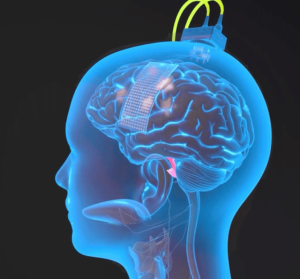 In a groundbreaking stride toward restoring natural communication for individuals afflicted with paralysis or speech disorders, researchers at the University of California, San Francisco (UCSF), in collaboration with UC Berkeley, have unveiled a remarkable feat of science: a novel brain implant that enables a paralyzed woman to speak through a digital avatar. This pioneering endeavor marks a pivotal advancement in the realm of speech neuroprostheses, offering hope and renewed autonomy to those who have long been deprived of their voice.
In a groundbreaking stride toward restoring natural communication for individuals afflicted with paralysis or speech disorders, researchers at the University of California, San Francisco (UCSF), in collaboration with UC Berkeley, have unveiled a remarkable feat of science: a novel brain implant that enables a paralyzed woman to speak through a digital avatar. This pioneering endeavor marks a pivotal advancement in the realm of speech neuroprostheses, offering hope and renewed autonomy to those who have long been deprived of their voice.
At the heart of this transformative innovation lies an implantable device empowered by artificial intelligence (AI), meticulously crafted to decode brain signals into articulate speech and emotive facial expressions. Led by the visionary neurosurgeon Edward Chang, the research team orchestrated a symphony of technology and neuroscience, culminating in a marvel that transcends the barriers of physical limitation.
Ann, a participant in this extraordinary study, found solace in the embrace of modern science as she watched her thoughts materialize into spoken words through a digital embodiment. Through a fusion of engineering ingenuity and neural intricacies, Ann’s silenced voice reverberated once more, imbued with emotion and authenticity.
The journey towards this groundbreaking achievement was fraught with challenges, as the researchers navigated the uncharted terrain of decoding brain signals and orchestrating a symphony of speech and expression. Kaylo Littlejohn, a Ph.D. student at UC Berkeley, shed light on the intricacies of the process, emphasizing the role of machine learning in deciphering the nuances of language and articulation. Through a delicate dance of prediction and synthesis, the team breathed life into the digital avatar, infusing it with the essence of Ann’s thoughts and emotions.
Yet, amidst the triumphs lay profound revelations. The preservation of vocal tract representations in Ann’s cortex affirmed the resilience of the human spirit, reaffirming the boundless potential of the human mind even in the face of adversity. As Gopala Anumanchipalli, assistant professor at UC Berkeley, aptly noted, this synergy between man and machine heralds a new era of collaborative autonomy, where AI serves as a conduit for human expression rather than a distant arbiter of fate.
Looking ahead, the horizon teems with promise and possibility. The quest for a stable, long‑term solution beckons, beckoning researchers to forge ahead in their pursuit of seamless integration and enhanced functionality. With each stride forward, the divide between limitation and liberation narrows, paving the way for a future where speech is no longer a distant dream but a tangible reality for all.
In this age of unprecedented innovation, the partnership between UCSF and Berkeley Engineering stands as a testament to the power of collaboration and interdisciplinary synergy. Through their unwavering dedication and relentless pursuit of excellence, these visionary pioneers have reshaped the landscape of possibility, offering a beacon of hope to countless souls yearning to reclaim their voice.
As the echoes of Ann’s newfound voice reverberate across the annals of history, let us seize this moment as a clarion call to embrace the boundless potential of human ingenuity. For in the union of science and compassion lies the promise of a brighter, more inclusive tomorrow, where the voices of the voiceless resound with newfound clarity and conviction.
